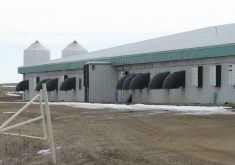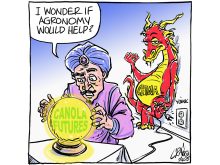AS THE rift between farmers and the federal government deepens over what should be a good-news story – more than $5 billion in federal funding for a five-year farm policy – agricultural lobbyists have been scrambling to make one thing perfectly clear: This is not about money. It is about program design.
Well, yes and no.
It is about program design because farm groups have yet to be convinced that what is being proposed is better than the program devil they know. They believe Ottawa is presenting a less-than-honest picture of the brave new policy world it wants to create.
Read Also

Determining tariff compensation will be difficult but necessary
Prime minister Mark Carney says his government will support canola farmers, yet estimating the loss and paying compensation in an equitable fashion will be no easy task, but it can be done.
And it is good politics for farm groups to assure Canadian taxpayers they are not whining about a $5 billion support commitment.
In fact, though, money issues are very much part of the bitter political fight.
Start with the funding commitment, $1.1 billion a year for five years. The government finally is conceding that this is not an increase over what has been available for the past three years but merely a commitment to keep it going for another five years.
So it is not more money.
Yet Ottawa claims this new $1.1 billion will stretch further than the old $1.1 billion because it will all be available in a year of declining incomes whereas farmers squirreled away millions of the old $1.1 billion in NISA accounts that were saved for retirement or a rainier day.
The new rules will force farmers to drain their accounts to receive federal funds. So, the new money will be more available because farmers are forced to spend more of their own money.
Sounds fair, even if that is more blunt than Ottawa would say it and it doesn’t end up with farmers having more assets.
But what happens if demand in a bad year exceeds $1.1 billion? Ottawa has made it clear there will be no more ad-hoc federal payments
No problem, says Ottawa, since unused money can be carried forward from past years and maybe funds can be “borrowed” from future years.
It still makes funding in extraordinary years an uncertain proposition.
And there is one other money issue that should be considered in the APF debate.
Ottawa is determined to stop co-funding provincial “companion” programs after 2006, arguing that federal dollars must fund only national programs.
To fend off his critics, federal agriculture minister Lyle Vanclief has said that beyond federal-provincial programs, provinces can do anything they want.
Buried in that federal abdication of all but narrow national standards are the seeds of interprovincial chaos that existed in the 1980s. Vanclief is essentially saying there will be no national standards on provincial programs funded above federal participation.
The 1980s were marked by provincial spending wars that attracted farm sectors to the richest provinces, often at the risk of trade action.
Federal co-funding of provincial programs gave Ottawa some ability to minimize interprovincial subsidy wars.
Vanclief seems to be saying Ottawa cares only about national standards for federal dollars.
That is a ticking time bomb that is very much about money.
















